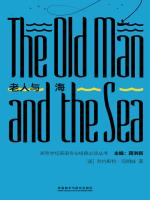Book review
The Old Man and the Sea is the last short novel of Ernest Hemingway published during his lifetime. The following are the analysis and comments of a simple story which was between an old, seasoned fisherman and the greatest catch of his life.
The Old Man and the Sea encompasses many of the themes that preoccupied Hemingway as a writer and as a man.
Hemingway's distinctive writing style is exemplified through short, concise sentences and a matter-of-fact approach to the events he portrays. In the middle-grade novel, the reader encounters complex themes of strength and perseverance, as well as symbols of perfection and age, which are directly addressed.
This middle-grade novel highlights the strength of the protagonist's spirit and reflects Hemingway's struggle while writing.
Hemingway was fascinated by the idea of humans proving their worth by facing and overcoming natural challenges. Of the various themes in The Old Man and the Sea, hardship and the perseverance required to overcome them is one of the most prominent. The majority of the novel is interspersed with struggles, whether Santiago is on shore or at sea. Through contextual clues, and Manolin's desire to care for the old man, it is clear that Santiago is poor. He has no complaints because of his poverty. This can be seen in his hut, the bed he sleeps in, his lack of food, and in the eyes of the other fishermen. Because of his age and bad luck, Santiago knew he had to "outdo everyone" by leaving land and entering the Gulf Stream, in an empty arena of sea and sky, where the last drama would be played out. As the old man hooks a marlin longer than his boat, he tries with bleeding hands on the line to get it close enough to the spear. Through his struggle, Santiago demonstrated the capacity of the human spirit to endure hardship and suffering in order to win. It is also his love and knowledge of the sea, and its unrelenting cruelty and kindness, that enables him to prevail. The essence of the story is physical, the smell of tar, salt and fish blood, the old man's spasms, nausea and blind exhaustion, the terrible death spasms of the big fish, contrasted with the dazzling light and the ethereal quality of the water, its isolation from the world and the swelling movement of the ocean. Through it all, the story is always pulling, relaxing a little, then pulling again, all in sync with the old man's struggle. This is a story that needs to be read in one sitting.
Another prominent theme in the middle story is the friendship between humans and the wider world of non-human animals. The most important human relationship is that between Santiago and his young student and fellow fisherman, Manolin. The boy cares deeply for Santiago and often berates himself for not doing more to look after him. They share a love of baseball, which helps Santiago survive when he is at sea.
The reader must also consider the relationship between man and animal. Santiago spends a lot of time thinking about the relationship between himself and the marlin while sailing. He felt that they were like brothers, connected through their shared presence on earth and their desire to survive. In fact, the old man felt he was a brother to all creatures on this planet and showed great respect for the life he encountered.
I was happily relieved to hear the news that a fish had caught the old man's hook. "Oh, thank goodness," I said aloud, surprising myself with my attachment to the fictional events written on paper more than 60 years ago. This is it, I thought, finally a relief for this well-deserved man. But, as with all great novels, my satisfaction was prolonged. What ensued was a struggle I could not understand. Days passed and the fish dragged Santiago further and further away. Even more frustrating was the fact that for a while he didn't even know what was hooked.
Yet Santiago's story was ultimately a failure, and his bad luck continued. The marlin's blood had entered the ocean and the carcasses of the marlin tied to the side of the boat were eaten by sharks. He returned a few days later, only a skeleton. But here's a surprise : he made it. Not only did he come back alive, but he never betrayed his principles or his will. So he lived another day to go fishing, while the marlin did not. Santiago went to bed, woke up, ate something, then went fishing again and repeated the whole process. Santiago reaffirms who he is in his later years; he proves that he does not need to change. Determined, unyielding and unchanging. That, according to Hemingway, is what it means to be human.




 京公网安备 11010802032529号
京公网安备 11010802032529号